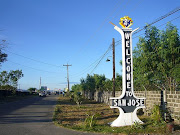Everybody knows that on December 12 we Catholics will be celebrating the Feast Day of our Lady of Guadalupe but only few are aware that in Honduras of the 80s’, there was a revolutionary priest nicknamed Guadalupe. People call the late Fr. James Carney as Padre Guadalupe, an expression of his deep devotion to Our Lady of Guadalupe. That time the most striking reality in Honduras was the degrading poverty of the rural peasants. Carney turned his back from the comfortable security of the priestly world to immerse and identify more deeply in the world of the poor. In his book “All Saints” (p. 404) author Robert Ellsberg has this to say on the American Jesuit: “Over the next decade Carney became increasingly committed to peasant struggles for land and justice.”
The author further wrote, "Grossly inequitable distribution of land left the majority of the rural population in the status of indentured servants – hungry, illiterate, living in shacks, resigned to watching their children die of malnutrition and disease. Meanwhile, the owners of the haciendas made a show of their Catholic faith, appealing to the bishops to bless the status quo and to denounce communism. But when the bishops began to talk about social justice, then the rich spoke of betrayal, heresy, communist subversion! Carney was a particular scapegoat.” He was stripped off his Honduran citizenship and was exiled to Nicaragua. Carney told highlights of his life in his autobiography called “To Be a Revolutionary: The Autobiography of Fr. James Guadalupe Carney” which was published by Harper and Row in 1987.
In September 16, 1983 after his armed band of Honduran guerillas (He served as chaplain of the Central American Revolutionary Workers Party or PRTC) was captured by the government forces, he was taken up in an army helicopter and hurled out, alive, to die on the mountainsides below. His remains was never recovered, wrote Ellsberg.
Getting thrown out of an aircraft seems the favorite execution method in Latin America that time. In Argentina way back in Advent of ’77 there was this story of the “flying nuns”. Sisters Alicia Domon and Leonie Duquet, both French nationals and members of Toulouse Institute of the Sisters of Foreign Mission, are said to have been tossed out of the airplanes over the Atlantic Ocean and like Padre Guadalupe, their remains were not been recovered.
The incident was confirmed later by a retired Navy commander, Adolfo Scilingo who confessed his role in the “death flights” of the “flying nuns” (a joke and rumor moving around that time in military camps). The former military officer testified that he did not know that the bodies are those of nuns and he said he is just following orders. And this is the saddest part: when he confessed his actions to a military priest, he was told the killings “had to be done to separate the wheat from the chaff!” Violation of human rights was so rampant in Argentina that time but the conservative Catholic Church remained largely silent those days. As silent as our local Church that did not even initiated a diocesan-wide and concerted campaign against the Reproductive Health (RH) Bill.
Before her disappearance and way back in Buenos Aires, Sr. Alicia Domon became closely involved with a courageous organization of women called Mothers of the Disappeared. Several months before her disappearance, according to Ellsberg, she had written to the archbishop of Toulous, “I would not ask you not to do anything to save me which could endanger others. I have already made the sacrifice of my life.”
Our Lady of Guadalupe was proclaimed “Patrona de las Americas y de las Islas Filipinas” in 1565 by Pope Clement VII. For all the Christians in Latin America and the Philippines, this feast is a reminder of Mary’s importance as type and mother of the Church and that crosses all cultural boundaries like the three internationalists that we have studied. The message of Our Lady of Guadalupe was clear: the church must not serve as the religious arm of colonial oppression. Today the message is still relevant but in a new context: the church should not allow herself used by politicians towards their selfish ends. Instead, conversion must be rooted in the experience of the poor and become a vehicle for their cultural and spiritual survival. This is the message of the Our Lady in Juan Diego’s ayate (cloak). This is the same message that was imprinted in the hearts of our “flying priest and nuns”.
Well, not all priests and nuns are the same. Some are even putting down the lowly and raises the mighty high above their thrones, an exact opposite of Mary’s protest in her “Magnificat”. ..
-------
(Photo from msanantonio.com)






No comments:
Post a Comment